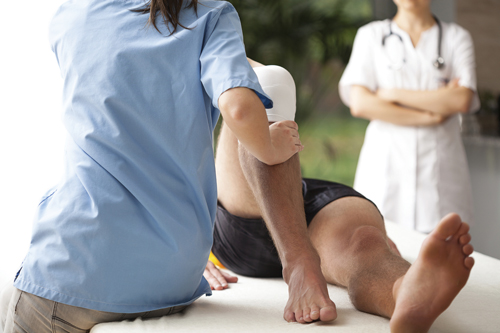
The strongest joint in the body, the knee can bear forces of more than twice your body weight. When the thighbone (femur), knee and shinbone (tibia) are properly aligned, weight is distributed equally over the knee. However, degenerative arthritis, osteoarthritis or tearing and repair of the anterior cruciate ligament can result in an uneven distribution of weight.
When weight bearing is uneven, the side of the knee carrying the most weight wears down faster than the opposite side. You become bow-legged (genu varum) when greater weight is shifted to the inside of the knee, or knock-kneed (genu valgum) when weight is shifted to the outside compartment.
The problem is self-perpetuating. Misalignment produces uneven weight distribution, which causes uneven wear that creates even greater misalignment, until eventually the knee becomes disablingly painful. At this point, you have two choices: total knee replacement or osteotomy, a surgical procedure to realign the leg. In an osteotomy, the surgeon removes or inserts a wedge of bone from either the tibia or femur so that the realigned leg equalizes weight bearing in the knee.
Knee osteotomy is most successful in patients who are
- younger than 60 years of age
- physically active
- have arthritis only on one side of the knee
- have healthy bones
Osteotomy can reduce or eliminate pain and restore function, but it is not a permanent fix. About 20% of people who undergo osteotomy need total knee replacement after five years, and 50% need total knee replacement after 10 years. Recovery from osteotomy generally takes three to six months and requires extensive physical therapy, beginning with range-of-motion exercises and progressing to strengthening exercises and gait training. We will work with you and your physician following surgery to devise a rehabilitation program to restore full joint function and relieve pain.
